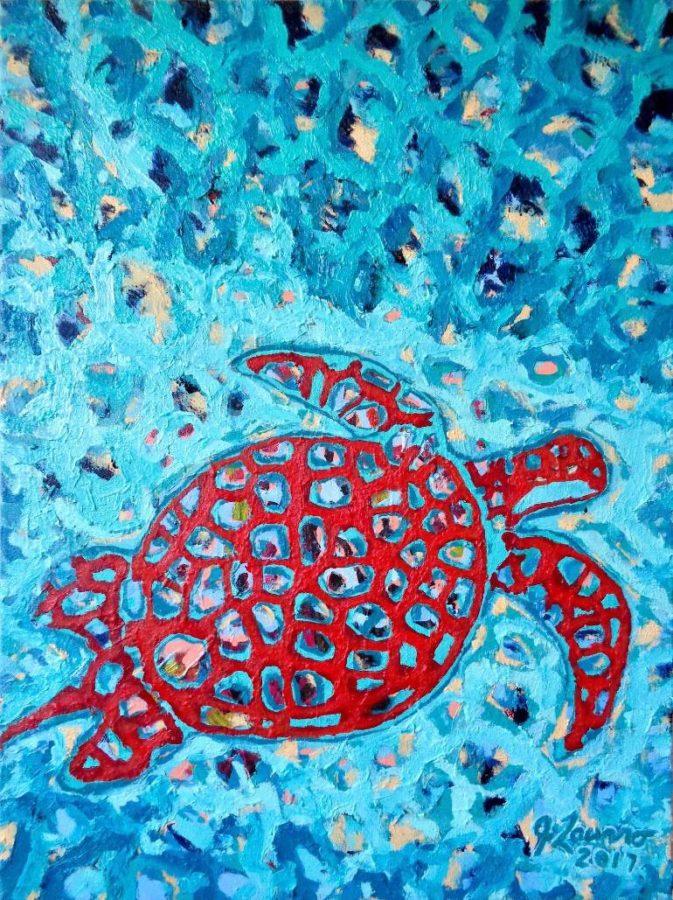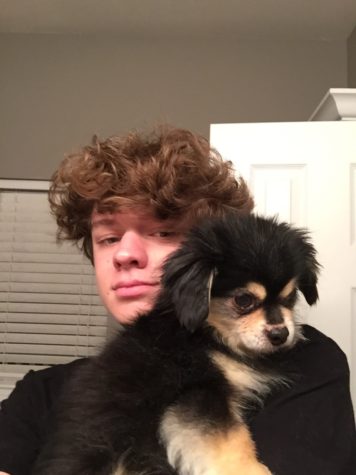It’s not about the Monet
The High Price of Fine Art
March 23, 2017
Painting is dead. Well, it is to a non-painter. To a painter it’s alive and not dying anytime soon.
Over the thousands of years that painting has been around, it has been evolving constantly. New movements starting around the 1920s known as Cubism and Minimalism have made the untrained eye feel like perhaps painting is de-evolving to the original days of cave paintings.
This is the true price of the “priceless” works in the Metropolitan Museum of Art in New York City and the Getty Collection in Los Angeles. These works of art labelled as “fine” fetch a much heftier price than money; they cost the general populous the ability to look at new art and judge whether or not it is a masterpiece. It costs them the ability to unbiasedly look at painting, for they now believe the term “masterpiece” is a closed club. Because of this many people see the medium of painting as dead, or at least unable to be improved upon.
Joseph Laurro, professional painter and art teacher, isn’t so sure. We at the iNews Network got to sit down with him and talk about his craft, which so many people have been quick to write an obituary for.
“I knew I was a painter, I just didn’t know what that would look like,” says Laurro when discussing his early painting career under the mentorship of a local artist named Julianne F. Williams. Mrs. Williams and her husband, Judd, opened up their home to Mr. Laurro for apprenticeship after he studied at New Paltz in Rochester, New York.
“When I was in school there were a lot of new mediums installation art. You would hear ‘Painting is dead, painting is dead.’” But Laurro didn’t let this deter his passion. He underwent rigorous classes, where he had to memorize countless name of artworks along with their artists and time periods, along with learning the delicate science of color mixing, and of course, practicing his own technique.
Though he had the tools to make art, some from school, some from his mentor, he ended up finding his voice as an artist not from traditional means, but instead from a place of profound loss. Members of his family and his mentor, Mrs. Williams, all passed away in 2011. Prior to these losses Laurro described his work as “very raw. It was dealing with the body internally. Lots of rage,” These losses of course helped define him as an artist.
Laurro says he found peace and reconciliation in nature during these months. “Lots of my work deals with natural motions… My work isn’t socially and politically obvious, but it has been dealing with environmental issues and concerns.” Some examples in Mr. Laurro’s work include moving water, flocks of birds, and bees. Joseph Laurro’s work is very deliberately alive, as is the medium of painting to him. “I think saying ‘painting is dead’ is great excuse to stop trying to get better at it.”
There’s an obnoxious smell of chemicals in the air. You choose to disregard it as you slice vibrant cuts of color onto the canvas in front of you. Around you crawls the scars of past projects in the form of paint drops on the floor and some, however unexplainably, on the walls. You are, of course, in a painting classroom. Or at least we were when we interviewed Gretel Smith, the art teacher at the NYC iSchool.
“Painting didn’t die,” she says. “People just found more new things to do with it.” This of course is exactly the issue, it evolve a way people didn’t necessarily appreciate, the most highly criticized being minimalism. But Mrs. Smith isn’t so sure it deserves all the hate it gets. “I think that art is about expressing some idea. And for some people it’s about expressing how pretty a sunset is… But for some people it’s more experimental. I think minimalism is about seeing how much can be taken away while it can still be art.”
The iSchool is a hub for artists and dreamers straight from a John Lennon song. You can’t put out an arm without hitting an artist. Kamil Kuzminski, a senior at the NYC iSchool says he does, “Printmaking, paint, and drawing.” He says he does art “Outside the box. Very creative. [He has] to transform [his] artwork past what [he] comfortably want it to be.”
I barely even have to turn on a heel to meet Goshumi Valoy Tineo, who says she draws for fun. “No,” says Goshumi. “I don’t think painting is outdated. It’s in every museum. It’s still a popular thing for a reason.”
Seated directly next to her is charcoal artist Cade Smith, another artistic student. Cade says he often “draws inspiration for his art from music he listens to,” and although his most foremost medium is pencils, he’s recently “been experimenting with adding water colors to [his] drawings.”
Painters, teachers, and students alike all agree: painting isn’t dead, and won’t be any time soon.



